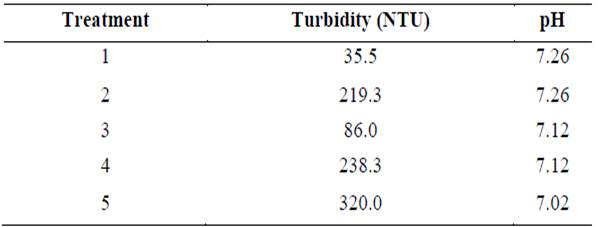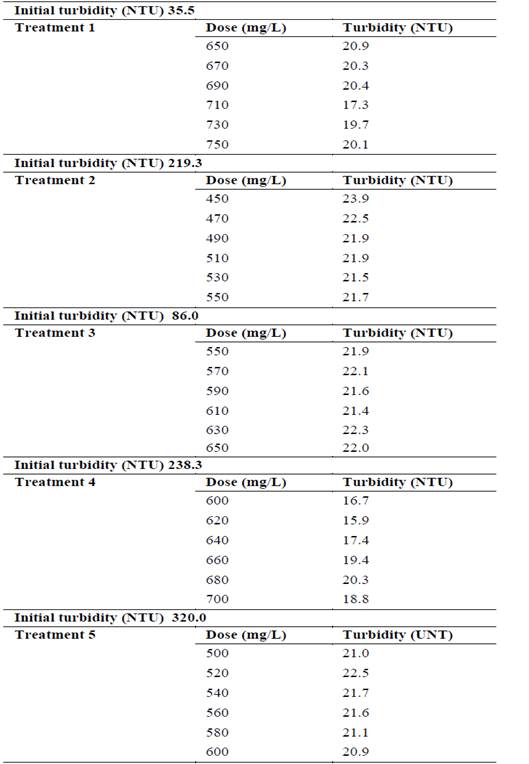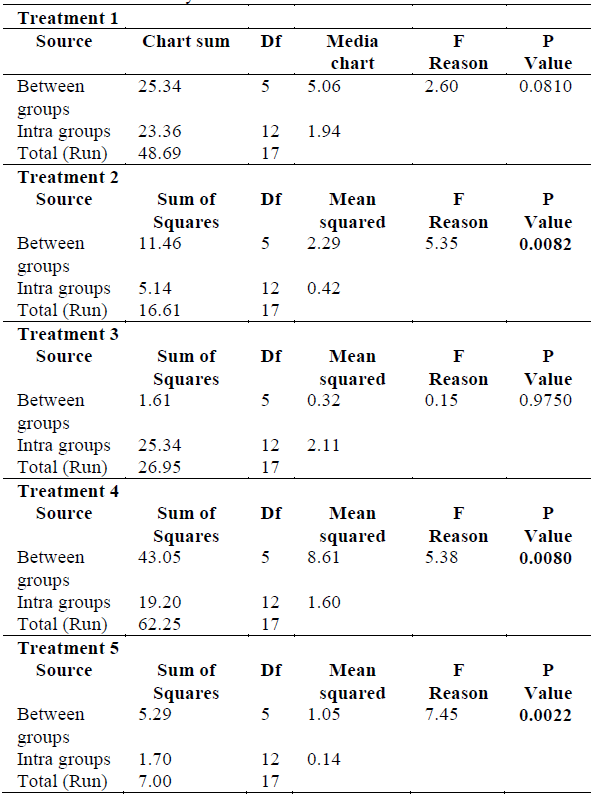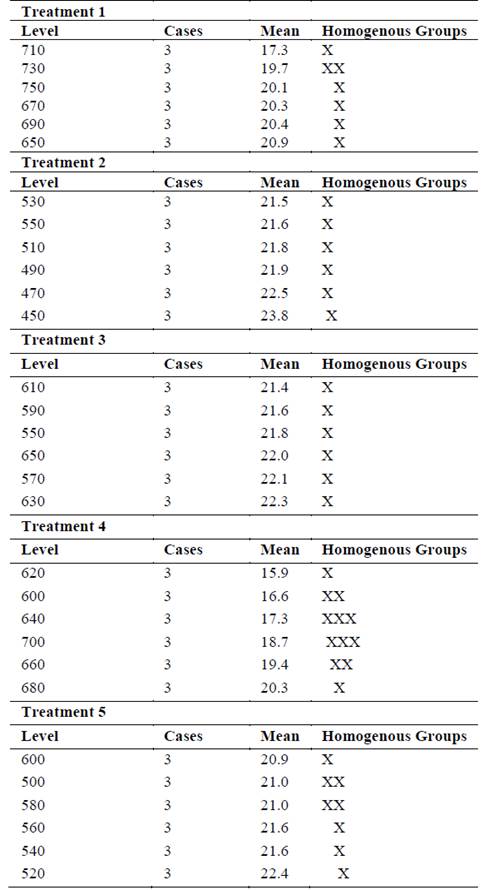1. Introduction
Clarification is one of the stages of the water purification process, which consists of the coagulation, flocculation and sedimentation phases. Clarification is aimed at the removal of color, turbidity, materials suspended in water and some metals such as aluminum, iron and manganese [1].
For the coagulation-flocculation process the addition of chemical or natural substances is necessary [2]. The first phase of the clarification consists in the destabilization of the particles while stirring rapidly for the formation of floccules. While the flocculation process involves a decrease in the speed of the mixture to cause larger floccules that can sediment more easily [3].
The chemical coagulants are the most used for this type of treatments, highlighting the aluminum sulfate because it is abundant in nature and widely used in the industrial sector [4]. However, its high toxicity and potential harm to the environment, animals and human health have been known. It has been shown that this chemical reduces hemoglobin and hematocrit in rats, causing anemia in these animals [5].
Through epidemiological information it is stated that exposure to aluminum sulfate increases the inflammatory activity of the human brain, which causes the appearance of Alzheimer's disease. In addition, it accelerates the brain aging, which represents all onset of neurological disease associated with advanced age [4].
Aluminum sulfate is responsible for a type of encephalopathy that causes the loss of muscle control, tremor and spinocerebrogenic degeneration [6].
Natural coagulants are a new alternative for clarification processes, because they are friendly to the environment, are not toxic and are renewable. To obtain these coagulants are used tannins, seeds, peels of lagoons fruits, vegetables and legumes [7], stems, leaves and biopolymers such as starch that is non-toxic, inexpensive and biodegradable [3]. Also these natural substances can remove heavy metals present in the water, as was shown in the Mukuvis River in Zimbabwe, using a dose of 8 mg/L of Opuntia ficus indica cactus. The levels of lead dropped to imperceptible values by the flame atomic absorption spectrometry FAAS. This result is obtained because the water has a pH of 5 that is within the optimum range of action of this plant material [8].
Manihot esculenta is the scientific name that yucca receives, also called cassava and tapioca. In South America, Africa and Asia, its cultivation is considered as the most important for the production of food [9] and economic, because they provide 40%, as carbohydrates as rice, needed to generate the calories required for the daily human and animal diet. Of the total yucca production in Nigeria, one third is used for animal feed and industrial purposes [10].
Yucca contains approximately 24% starch, used as a raw material in the glue and adhesive industry. In addition, it is used in the preparation of cosmetics, detergents and to improve the formation of foams and color in the foam and rubber industries.
In Brazil in 2017, environmentally friendly packaging was developed to extend the shelf life of food. Biodegradable films were designed with bioactive properties based on yucca starch, chitosan and galic acid, by using subcritical water that allowed hydrating the films and improving their antimicrobial and antioxidant properties. This technology was used in hams, extending its useful life for 25 days [12]. There are few scientific reports on yucca starch as a natural coagulant; however, starches from other plant materials have reported good results, including the rice starch [13].
Due to the large amount of vitamins and minerals that Moringa oleifera has, it is currently being studied in Israel as a dietary supplement for lambs. A silage was elaborated with this vegetal material and the animals were fed for 45 days once a day, registering their weights, to be later slaughtered. This study concluded that this food generates tender and lean lamb meat [15].
The Moringa oleifera has antioxidant properties, investigated to counteract the oxidative stress suffered by rats due to aluminum phosphite intoxication. This study determined that the use of Moringa oleifera eliminates the cardiotoxicity produced by said chemical, decreasing the levels of aluminum sulfate in the organism of rats [16].
In Malaysia, an investigation was developed that evaluated the coagulating power of Moringa oleifera for the recovery of suspended microalgae biomass. Due to its low cost, low toxicity and biodegradability, it was determined that this bio-coagulant is an alternative for coagulation processes and capable of replacing the chemical coagulant, aluminum sulphate [17].
In 2014, a study was carried out that determined the anticancer potential of Moringa oleifera to combat cervical cancer. This research established that the silver nanoparticles mixed with the stem bark of the Moringa oleifera, have excellent anticarcinogenic activity to be used in the treatment against cancer, developing an apoptosis or death of cells infected with viruses, potentially cancerous [18].
In the department of Chemistry of the Federal University of Pemambuco in Brazil, an investigation was carried out that evaluated the efficiency of the Moringa Oleifera and the Okra (Abelmoschus esculentus L) in the treatment of leachate from the CTR-Candeias de Muribeca landfill in the state of Permambuco. In this study, the effect caused by natural coagulants and the mixture of these in the leachate was determined. Finalizing the coagulation- flocculation and filtration treatment, parameters such as: color, turbidity, conductivity, total solids, COD and BOD5 were measured [19].
The purpose of this research is to evaluate the coagulant power of the mixture of yucca starch (Manihot esculenta) - moringa seeds (Moringa Oleifera) to clarify the water of a wetland. It is important to determine the effect that these coagulant mixtures will have on the water because the inhabitants of the area use it for consumption and carry out their domestic activities.
2. Materials and methods
2.1. Water collection object of study
In the Department of Atlantico - Colombia, simple sampling was carried out on the edges of the wetland, known as Cienaga Grande or Malambo, during the rainy season. Initially the turbidity of the water (TB 300 IR, Lovibond) and pH (ST2100, OHAUS) was measured, 180 L of the liquid was stored in plastic tanks at room temperature in the facilities of the Universidad del Atlantico.
2.2. Extraction and preparation of the natural coagulants
700 dried pods harvested from the Moringa oleifera tree were used. From each pod, approximately ten white seeds were obtained, crushed and ground to obtain a fine powder that was finally sieved. Then, the soxhlet fat extraction method was performed, the resulting flour was dried for 30 minutes and stored in a sealed glass container at room temperature.
The yucca starch was supplied by a micro company dedicated to the production of yucca rolls. In its productive process, the fresh yuccas harvested are peeled, washed, cut, ground and sieved. The dust that does not cross the sieve is known as yucca starch and is discarded for the preparation of this food. Therefore, this waste was used at no cost.
2.3. Preparation of mixture and doses of coagulant
For each mixture of natural coagulants, a solution was prepared with 100 mL of distilled water and the amount of each plant material was dissolved as shown in Table 1. In addition, the range of doses used that was determined by preliminary tests is presented.
2.4. Simulation of the clarification process
For the clarification process, the jar test (FC6S, VELP) was used, consisting of six beakers of 1500 mL. To start the treatment, the beakers were filled with 1000 mL of raw water, then the corresponding natural coagulant dose was applied. the simulation was carried out according to the Colombian Technical Standard 3903 of 1996, the rapid agitation was carried out during 1 munito at 120 rpm, after the time the agitation speed was reduced to 30 rpm for 20 minutes, then it was allowed to settle for 15 minutes. Finally, 20 mL of tap water was extracted from each container and the turbidity was measured again, as a variable response. The five experiments were replicated three times.
2.5. Experimental design and analysis of results
In this experimental type research, a factorial design of a single factor was used, for each mixture with six coagulant dose levels and a variable response, turbidity. This scheme of analysis allowed to find the influence that the mixtures of natural substances have, on the decrease of the turbidity of the water of the swamp.
With a confidence level of 95% (p value <0.05), the statistical program Statagraphics Centurion XVI.II free online version was used, to analyze the tabulated data during the three repetitions of the five coagulant mixtures, using an ANOVA analysis of variance and the Duncan test, which allowed finding the significant differences.
3. Results and discussion
The Resolution 2115 of 2007 of the Ministries of Social Protection and Environment, Housing and Territorial Development in Colombia, establishes that the water destined for human consumption must have a turbidity of 2 UNT and a pH between 6.5-9.0 in addition to other physicochemical parameters that must be met. Due to the amount of water needed to analyze each mixture of natural coagulants, five samplings were made to the Cienaga de Malambo. The turbidity and pH found in each case is presented in Table 2.
The jar test was carried out with the initial characteristics mentioned in Table 2. For each coagulant mixture six doses were applied, the results of the final turbidity are presented below in Table 3.
With a confidence of 95% in Table 4 the variance analysis ANOVA is presented. The value P <0.05 indicates that the factor studied in six levels influences the response variable, otherwise it does not intervene in the result.
In treatments 2, 4 and 5, the P value is <0.05, indicating that the factor affects the response variable, the final turbidity of the Cienaga de Malambo. To determine which levels influence the result, the Duncan test was used, which is presented in Table 5.
The Duncan Test uses the alignment of X to identify which level or levels produce a different result. If all or a group of X's are aligned there is no significant difference between the levels evaluated. On the other hand, if one or several Xs are in a totally different alignment, there are significant differences.
According to the alignment of the X, in treatment 1 two groups are presented, the first with the doses of 710 and 730 mL and the second with the doses of 650, 670, 690 and 750 mL. It can be identified that the significant difference was presented in the first group, with the value of the measurement it is affirmed that the dose that caused a lower final turbidity, 17.3 UNT is 710 mL.
Only one X in treatment 2 is not aligned with the others, with the measurement value it was determined that this dose generates a final turbidity value higher than that obtained when the five remaining doses were used, therefore, any of the 470, 490, 510, 530 and 550 mL doses causes the same reduction of the response variable. The optimal dose was 470 mg/L.
In treatment 3, all X's are aligned in the same position, therefore, there is no significant difference between the six levels, any of the six doses can be used, however, the smallest amount of substance is used, in this case the optimum dose was 550 mg/L.
Four groups of X were formed in treatment 4, the first with the doses of 600, 620 and 640 mhg / l, the second group the dose of 700 mg/L, the third with the dose of 660 mg/L, and the fourth group with the dose of 680 mg/L, taking into account the value of the average, the first group reduces more the final turbidity, indicating that anyone can be used. With an average turbidity value of 16.6 NTU, the optimum dose of 600 mg/L reduced this parameter by 93.0%.
Finally, in treatment 5 X are aligned in two groups, the first with doses of 600, 500 and 580 mg/L and the second with doses of 520, 540 and 560 mg/L, verifying the average the first group generates the best results with an optimum dose of 500 mg/L, a final turbidity of 21.0 NTU was obtained.
Table 6 shows the dose and the percentage of removal obtained with each coagulant mixture. Identified the three best removals, 89.7, 93.0, and 93.4% that were obtained with treatments 2, 4, and 5, with a ratio 80:20, 60:40, and 50:50, of yucca starch - Moringa seeds Oleifera when doses of 470, 600 and 500, g / L respectively were used. Fig. 1 shows a sample of water taken from the wetland (Fig 1A) and water after the simulation of the clarification process with treatment 5 (Fig 1B).
The efficiency of the seeds of the Moringa Oleifera as a natural coagulant was evaluated and compared with the chitosan using waters from the Humaya river in Sinaloa - Mexico. These seeds remove 88.8 and 95.7 turbidity when the water initially has 36 and 70 NTU, respectively. When using 0.5 mg/L of chitosan, 83.3% of the initial turbidity is removed, 36 UBNT, however, when the initial turbidity of the water is 70 NTU, a removal of 88.8% is obtained when 1 mg/L of chitosan is used [20].
In Brazil, the effect of Moringa oleifera seeds has also been evaluated, using synthetic water with an initial turbidity of 60 NTU.
The power of the seeds removes the 85% of this parameter when using a dose of 50 mg/L. For low values of turbidity, 10 UNT, with the same dose only a 60% removal is achieved [21].
These investigations coincide with the information presented in this study, as shown in Tab 6, because increasing the initial turbidity of the water, the percentage of removal is greater.
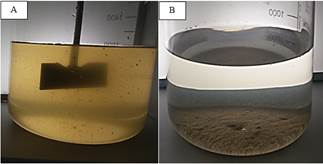
Source
Figure 1 Clarification of the raw water of the wetland (A) and the water after the simulation with the treatment 5 (B)
Starch, like many coagulants of vegetable origin, has been investigated as an alternative for water clarification. An investigation in Malaysia concluded that rice starch reduces the turbidity of synthetic water by 50% when this parameter has a value of 165 NTU, when using a dose of 120 mg/L [22].
In Iraq, water was collected from the Al-Mashroo channel for 12 months and it was determined that the cactus (Opuntia spp) decreases the final turbidity in a range of 0.296 NTU. With a low initial turbidity, 12.18 NTU, the 1 mg/L dose of the natural coagulant removes 100%, however, when this parameter is 900 UNT a 67.1% removal is obtained using a dose of 2 mg/L [23].
In this study, the initial turbidity of the Malambo-Colombia swamp water was 320 NTU, to remove 93.4% of this parameter, an optimum dose of 500 mg/L of the coagulant mixture of yucca starch and Moringa oleifera seeds were used, in a 50:50 ratio. These results demonstrate the efficiency of the combination of the coagulant to remove the turbidity of the water and achieve satisfactory results as presented in this investigation.
The seeds of Moringa Oleifera were combined with the Okra (Abelmoschus esculentus L) to evaluate the quagulant power in the treatment of the leachate from the CTR-Candeias landfill in Brazil. This combination reduces the turbidity of the leachate by 46% when a dose of 3750 mg/L of Moringa Oleifera and 2000 mg/L of Okra is used. When only Moringa seeds are used, the percentage of removal of turbidity increases to 60%, which indicates that Okra decreases the coagulant activity of this plant material [19]. However, with the present research it is affirmed that the combination of seeds and yucca starch potentiate coagulation, reaching percentages of removal of 93.4%.
4. Conclusions
The combination of natural coagulants is an alternative to replace or diminish, the chemical substances currently used to clarify waters, that cause damage to human and animal health and pollution in the environment.
Natural substances have greater coagulant power when the initial turbidity is high, however, with low values of this parameter still have good results. In addition to its efficiency in the water clarification process, yucca starch does not represent any cost for this treatment because it is a waste of the business sector dedicated to the elaboration of Yucca buns. In addition to its efficiency in the water clarification process, yucca starch does not represent any cost for this treatment because it is a waste of the business sector dedicated to the elaboration of Yucca rolls.














